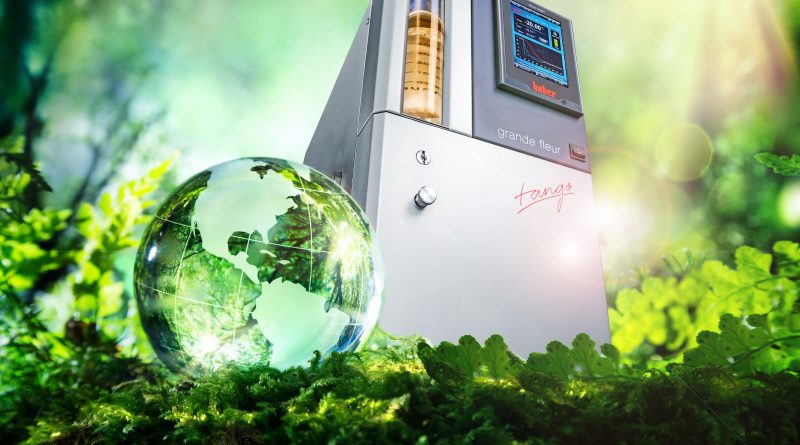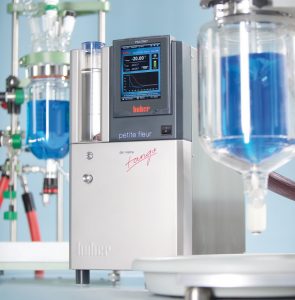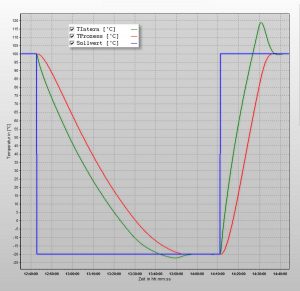Sustainable, environmentally safe and future-proof temperature control
In everyday life, hydrocarbon gases are in common use domestically. Gas fired central heating, water heaters and cooking stoves are common installations. Propane gas bottles are used in caravans and barbecues. In temperature control technology, natural hydrocarbons are also used as a climate friendly refrigerants.
Which refrigerant?
The decision on which refrigerant to use in a temperature control unit is a complex engineering decision. It is a compromise between different factors: it must be compatible with the other materials used in the refrigeration circuit such as the copper piping or lubricant in the compressor, be energy efficient and have the properties required for it to function as an effective refrigerant over the required temperature range. Previously, refrigerants used met all of these criteria but were shown to be harmful to the ozone layer and contributed to global warming. The EU F-Gas Regulation limits the use of environmentally harmful refrigerants. Modern refrigerants must have excellent energy efficiency and environmental compatibility. Natural refrigerants are the answer. As an innovator and a pioneer in refrigeration technology and as keen environmentalists, Peter Huber Kältemaschinenbau AG have been using hydrocarbons in their temperature control systems for many years.
Almost the entire product range at Huber is available with natural refrigerants. More than 90% of all units delivered in 2018 were equipped with natural refrigerants.
In the past, refrigerants that contained Chlorofluorocarbons (CFC’s) and Hydrochlorofluorocarbons (HFC’s) such as R134a, R507A and R404A were used in the refrigeration industry. These refrigerants are non-flammable and have good thermodynamic properties but fluorinated gases (refrigerants that contain HCFC and CFC) were shown to be harmful in that they have high “Ozone Depletion Potential” (ODP) and high “Global Warming Potential” (GWP).
EU F-Gas Regulation
The Montreal Protocol (1987) restricted ODP. The current EU F-Gas Regulation (EU No. 517/2014) refers to gases with GWP. The objective of the F-Gas Regulation is to reduce the maximum quantity of refrigerant released every year by 2030 to 21% of such releases as measured in 2016. In order to reach this goal, the maximum quantity has been gradually reduced since 2016 in a Phase down process (→ Fig. 1). Parallel to the phase down, additional GWP limits are set for various applications. Temperature control units are classified as “Stationary refrigeration systems” and as of 1st January 2020, have a maximum GWP of 2500. Exceptions to this are devices with a working temperature of below -50 °C.
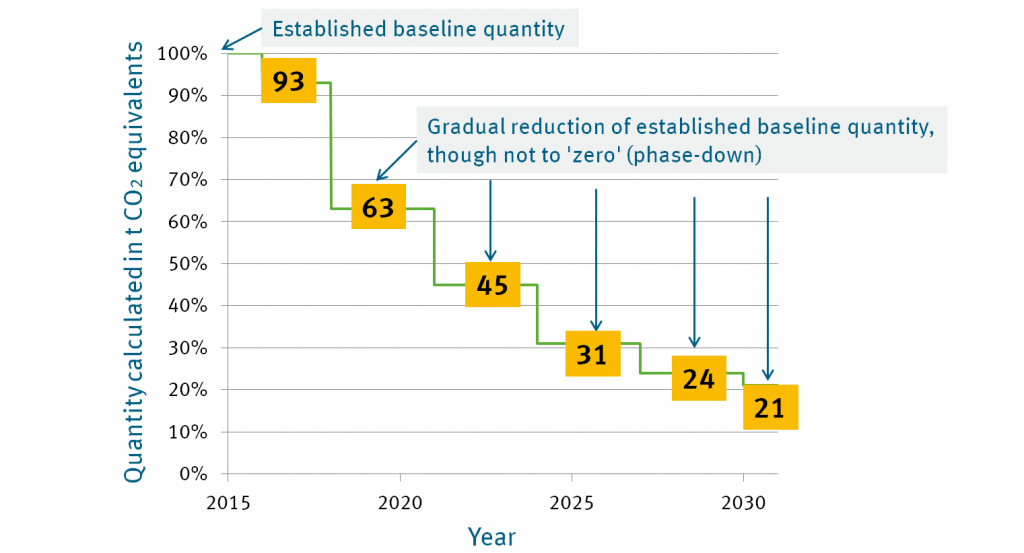
Alternative refrigerants
Already in the early 1970s, company founder Mr. Peter Huber started researching and using natural refrigerants. In the following years, Propane R290 and Propene R1270 have been used as a standard refrigerant in many units. These refrigerants have zero ODP and a low GWP (between 2 to 3). Some users are a little sceptical about natural refrigerants due to their flammability but Huber AG can look to historical records that involve (literally) thousands of units sold over a period spanning almost 40-years with not a single incident to confidently state that the use of the environmentally friendly natural refrigerants is safe.
The compact chillers (Unichiller, Minichiller, → Fig. 2), process circulators (Petite Fleur, Tango) and cooling circulators (KISS, Ministat, etc.) have been filled as standard with Propane R290 or Propene R1270 for many years. The refrigerant filling level on these models is less than 150 g, which usually requires no safety precautions. Even larger temperature control systems, such as the Unistat 610w with a capacity of 2.2 kg, are available on request with natural refrigerant. In this case, measures on the part of the operator to comply with standard laboratory safety regulations are necessary. Depending on the location and purpose, proper and the installation of a gas detection sensor are required.
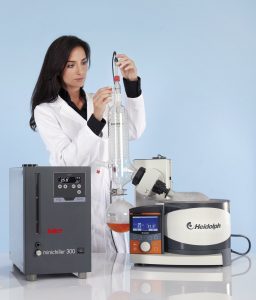
There is no real alternative to natural refrigerants. There are currently no known non-flammable and non-toxic synthetic refrigerants with comparable physical properties. This also applies to the new group of HFO refrigerants (Hydrofluoroolefins), e.g. 1234yf. Although these refrigerants have a low global warming potential, they are also combustible. The classification in the safety data sheet establishes no difference, to the risk assessment that must be made for flammable synthetic refrigerants to the same extent as for flammable natural refrigerants. Overall, the refrigeration industry has no option but to increase the use of flammable refrigerants in order to achieve the climate protection goals. The disadvantage of flammability is not only a matter of concern for natural refrigerants, but also applies to all chillers with synthetic refrigerants.
The decomposition product trifluoroacetic acid (TFA) is also a negative factor of synthetic HFO refrigerants. In several studies which have investigated the entry of trifluoroacetic acid from the atmospheric degradation of R1234yf, an increase of the TFA concentration in the environment was demonstrated. TFA is classified as highly hazardous to water and is degrades extremely slowly having long lasting negative effects. Although the use of R1234yf reduces the global warming potential, an overall environmental impact is present. There is a question mark behind the future of HFO refrigerants for this reason.
The availability of synthetic refrigerants will become a problem as their availability diminishes or disappears.
When purchasing a temperature control unit, it is essential to check the long term investment security. The availability of synthetic refrigerants will become a problem as their availability diminishes or disappears. The resulting scarcity of these refrigerants causes prices to increase dramatically overnight. No one can predict whether the legal situation will intensify in the coming years, possibly beyond the limitations known today. Careful consideration should be given as to whether or not the refrigeration system can still be operated and maintained in the future. Refrigeration systems with natural refrigerants are future proof in this regard.
Refrigerant R290 in practical use
In practice, natural refrigerants have significant advantages over their synthetic derivatives. The refrigerant R290 has very good thermodynamic properties. Advantages include low pressure losses in pipelines and heat exchangers, low energy consumption during compression, lower amounts of refrigerant required and good material compatibility. The operating performance is even better than that of R507A, R404A and the replacement refrigerant R449A. The disposal of R290 is also easier than that of synthetic materials. Since propane is a natural substance, it can be discharged into the atmosphere in a controlled manner.
The case study of a Petite Fleur process circulator (→ Fig. 3) on a 2 litre glass reactor shows the performance of a device with the natural refrigerant R290. The circulator achieves a cooling capacity of 0.48 kW and covers a temperature range of -40 to +200 °C. The case study documented a cooling and heating process. The case study shows that the small Petite Fleur cools the mantle from +100 °C to -20 °C within 70 minutes. The graph (→ Fig. 4) shows the precision and stability of the cooling process.
The next step: CO2 as a refrigerant
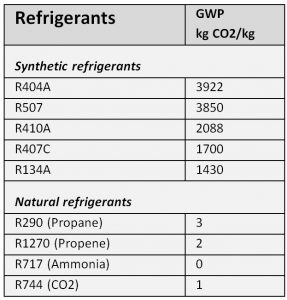
With the presentation of the new Unichiller CO2 model range in 2018, Huber took the next step in the development of environmentally friendly temperature control solutions. The new chillers use CO2 (carbon dioxide, also R744) as refrigerant. This colourless gas liquefies under pressure, has a neutral ozone depletion potential and a negligible global warming potential (GWP = 1). A disadvantage is the high operating pressure but this has been addressed through the engineering expertise of Huber AG.
The component prices are currently higher than for conventional refrigeration systems owing to the unavoidable increased thickness of components to operate under the pressures required to use CO2. The market share of CO2 refrigeration systems, has been growing rapidly for years. This growth will increase the availability of components and (hopefully) lowering prices. The thermodynamic benefits of CO2 as well as the good availability and safety speak for themselves and enable future-proof planning.
Conclusion
Natural refrigerants are the future. No matter what needs to be temperature controlled or cooled in the laboratory: from distillation apparatus through the analyser to the research reactor, natural refrigerants contribute to a positive environmental balance. There are no limitations in terms of performance and the safety concerns are unfounded as can be seen in the common domestic use of these gases as well as the historical record. When choosing a temperature control unit, users should keep in mind that the unit will be in use for many years. During this time, the refrigerant has a significant impact on energy consumption. A choice of refrigerant based on sustainability eliminates the need for subsequent, costly retrofits and protects against additional investment due to new regulations and laws.
Program of action “Environment Plus”
Back in the 1970s, Peter Huber developed the first refrigerators with natural refrigerants. In 1982, the program of action “Environment Plus” was launched, which covers all aspects of environmental protection and accelerated the further development of resource saving temperature control technology at an early stage. As early as 1993, Huber customers were able to work with CFC-free temperature control units, many years before the legal deadline established. Gradually, the standard models were switched to natural refrigerants. Today, almost the entire range of laboratory equipment is equipped as standard with natural refrigerants. In 2018, more than 90% of all temperature control units sold were supplied with natural refrigerants. Even larger systems are available with natural refrigerants.


